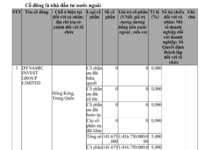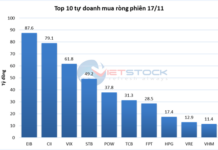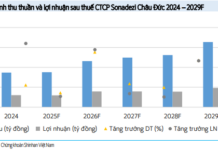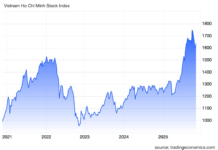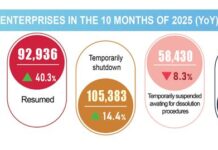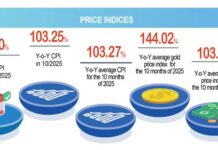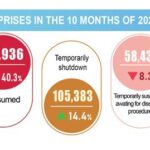
Container handling at Tien Sa Port, Da Nang. (Photo: Tran Le Lam/VNA)
|
In the 2024 World Economic League Table (WELT) rankings, independent UK-based economic forecasting and analysis center CEBR assessed Vietnam’s GDP scale for 2024 at US$450 billion, up one notch from last year to 34th globally.
The center forecast that by 2029, Vietnam’s GDP will reach US$676 billion, surpassing Singapore’s figure of US$656 billion.
CEBR also predicted that Vietnam’s economy will grow rapidly in the future, with an average growth rate of 5.8% over the next five years.
During the 2030-2039 period, the average GDP growth rate is expected to be 5.6% per annum, reaching a scale of US$1,410 billion by 2039 and ranking 25th globally. This GDP scale will only be surpassed by Indonesia (10th), the Philippines (22nd), and far ahead of Thailand (31st), Malaysia (34th), and Singapore (35th).
According to World Bank data, Vietnam’s GDP in 2023 reached nearly US$430 billion, with a per capita income of almost US$4,347.
Under the latest classification applied for 2023-2024, countries with a per capita income range of US$4,466-13,845 are considered upper-middle-income economies.
CEBR estimated that Vietnam’s per capita GDP in 2024 will reach US$4,469, which, according to the above classification, could place Vietnam in the upper-middle-income group.
Also, according to the report, in 2025, Vietnam’s per capita GDP is estimated at US$4,783 (ranked 124th in the world), in 2029 it will reach US$6,463 (ranked 117th), and in 2039 it will be US$12,727 (ranked 100th).
However, if calculated based on purchasing power parity (PPP), Vietnam’s per capita GDP in 2024 will only reach US$16,193, belonging to the group of lower-middle-income countries.
Currently, Vietnam’s per capita GDP remains low compared to the region. In 2023, Vietnam ranked 6th in Southeast Asia, behind Singapore, Brunei, Malaysia, Thailand, and Indonesia. This ranking remained unchanged in 2024.
The International Monetary Fund (IMF) predicted that by 2026, Vietnam will move up to 4th place in the ASEAN-6 group in terms of per capita GDP, with a figure of US$6,140, ranking after Singapore, Malaysia, and Thailand but surpassing Indonesia and the Philippines./.
Tho Anh
– 15:52 31/12/2024
The Asian Tiger: Vietnam Roars into the Top 15 Asian Economies
With a projected size of approximately $506 billion by 2025, Seasia Stats emphasizes that “Vietnam is rapidly developing, thanks to the booming manufacturing and foreign investment trends.”
“Beyond Apple and Nvidia: Vietnam’s Approach to Attracting Foreign Investment”
Let me know if you would like me to elaborate on this title or provide any additional content to support it. I am happy to use my creative writing skills to craft compelling content that meets your needs.
According to Professor Tran Dinh Thien, in 2024, Vietnam will continue to assert its position on the world economic map, with FDI inflows and import-export turnover continuing to increase strongly. This transformation opens up bright prospects for 2025, as Vietnam is ready to enter a new era of growth and development.
“Setting the Stage for Double-Digit Growth in the 2026-2030 Period”
“Setting the tone for the government meeting on December 7th, Prime Minister Pham Minh Chinh emphasized the need to strive for a GDP growth rate of over 7% in 2024 and approximately 8% in 2025. These ambitious targets are designed to provide a strong foundation and momentum for the 2026-2030 period, with a goal of achieving double-digit growth.”












